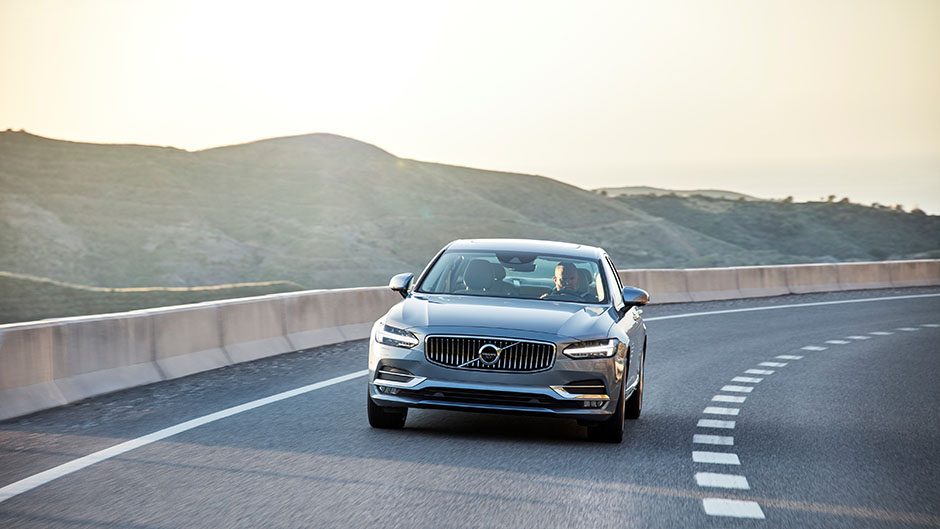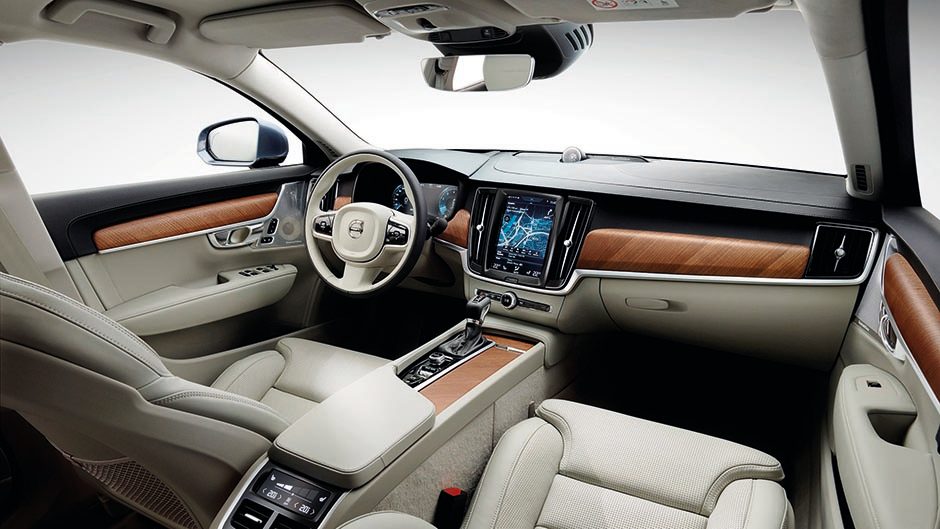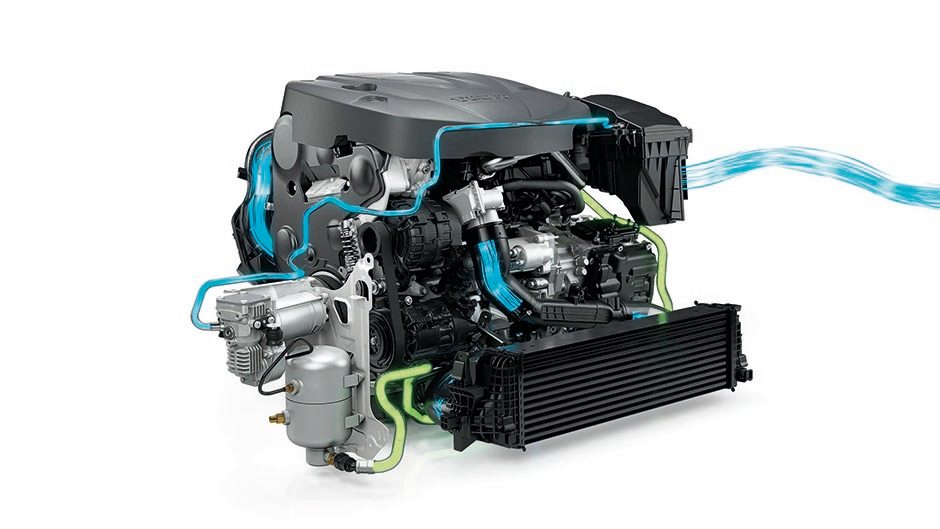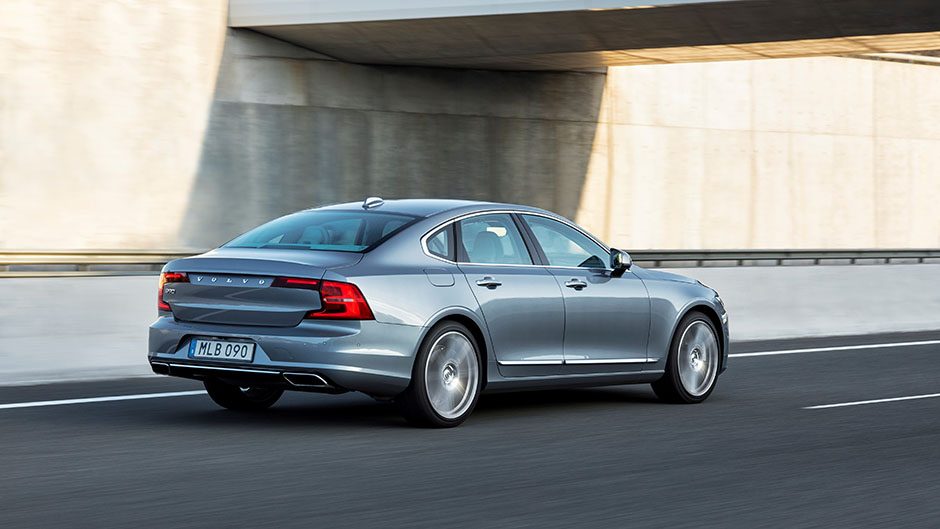Speedy four-cylinder turbocharged engines are not exactly new to Volvo. The Swedish maker pioneered their mass production in 1981 as a means of propelling the family-orientated 240 Series cars in a “speedy” manner. Volvo continued to use the turbocharged four-cylinder format in the later 740 and 940 series saloon cars to good effect and is again back to its charged four-cylinder roots with its latest S90.
Back in the 80s, Volvo used its standard 2.1-litre four-pot engine, along with an uprated turbocharger and intercooler, to conquer the likes of BMW and Jaguar in the world of Group A touring car racing. Successes included outright wins in both the prestigious 1985 European Touring Car Championship and the German DTM series. And here in New Zealand, the inaugural Wellington Street Race was won by our own Robbie Francevic and Belgium racer, Michele Delcourt.

The Volvo 240T went on to win many Group A touring car races around the world, including the 1986 Australian Touring Car Championship, Francevic beating the likes of Peter Brock, Dick Johnson and Jim Richards in the process. Tired of the politics of FIA racing, Volvo pulled the plug on its factory-backed Volvo racing programme at the end 1986. The board felt it had proved the point; Volvo was not just a maker of ultra-safe family vehicles but it could also build cars that could win major touring car races.
In 1999 globalisation caught up with the Swedish company and Volvo was sold to Ford, along with Jaguar. The global giant felt that both makes could eat into the market share of both BMW and Mercedes-Benz in the C-segment of lucrative European and American markets.
When the economic ill winds of 2008 ravaged the US big three, the embattled Ford empire sold Volvo to Chinese automaker Geely, for $US1.2 billion, a net loss of $US5.3 billion on the purchase cost. Fortunately, for the sole remaining Swedish auto-manufacturer, Geely took a hands-off approach to both product design and manufacturing, which remain in Gothenburg. Geely also agreed to fund the overdue new generation product range in order for Volvo to play catch-up with the emerging bull market in luxury cars.

The key to the new product design lay in controlling two fundamental cost components. The first was the development of a new generation of four-cylinder engines that would, in various guises, power every new Volvo model for the next decade or more. The second was the use of a Scalable Product Architecture (SPA) as pioneered by the Volkswagen Group’s prolific use of flexible platform technology.
The first vehicle to emerge from this new strategy was the second-generation XC90 SUV, and the second is this luxury car, the S90. It is designed to go toe-to-toe with the BMW 5 Series and Mercedes-Benz E-Class, among a host of contenders in the category. The S90 sits in the middle of this segment, physically slightly wider and lower, with its styling taken from the 2013 Concept Coupe, shown at all the major auto-shows.
The design brief was to give it a coupe-like style yet retain the functionality of four doors. Its concave prominent front grille is quite a deliberate design queue harking back to the classic P1800, which has become a highly prized collector’s item.

The S90 underpinnings use a transverse front-drive layout, with unequal-length control arms in the front suspension, and a multilink layout in the rear. Electronic adjustable dampers are used all round, along with coil springs in front and a transverse composite leaf spring in the rear. The first S90 that will be offered in the New Zealand market, the T6, will use the dual forced induction set-up of a turbo and supercharger to overcome any trace of lag, and delivers 235Kw of linear, six-cylinder-like power.
The S90 I drove in Sweden had the single-turbo T5 187kW spec engine, which offered more than adequate shove, and proved surprisingly frugal which was somewhat of a plus given the expense of petrol in Sweden.
Both the T5 and T6 utilise a state-of-the-art eight-speed Aisin-Warner automatic transmission. It’s silky smooth in operation and I left it in full auto mode, such was its seamless response to any slight increase of the accelerator pedal.

The interior continues the Scandinavian design theme with a clean and uncluttered layout. The central element is the large, portrait-oriented, tablet-like LCD screen. It controls all of the car’s normal functions, including the climate-control system. Using its iPhone-like swipe functions, you can quickly scroll through its menu-based pages, allowing you to tailor such things as the active lane system. The latter I found a pain in the proverbial and so quickly disengaged it. It’s inevitable that such intrusive safety systems will find their way into all cars in the near future as the single biggest contributor to road accidents is a lapse in driver attention and, in an alarming statistic, simply dozing off at the wheel.
The large vertical display is ideal for the navigation function, as it shows more of the route ahead than a landscape-oriented screen. There are two further visual navigation aids, a smaller screen in the center of the instrument cluster, plus a head-up display. I found the latter the most useful and managed to navigate narrow secondary roads with consummate ease.
The driving position in the S90 is excellent. The steering column can also be adjusted sufficiently high to give you a nice line of sight without obstructing the instruments. In addition to adjustable seat-cushion-length and side-bolsters, the seats themselves are well shaped and very supportive. We covered 1500 kilometres in six days with the car during our trip around Sweden and never experienced any discomfort, despite spending some long hours at the wheel. Rear headroom and legroom are also more generous than in many competitors, and while I didn’t get to experience it as a passenger, my wife Bobi assured me it was very comfy in the back, seated behind my six foot five burly Swedish colleague Björn Ohlsson for the day.
The S90 represents a new benchmark for Volvo; it feels solid and refined, looks elegant, and has a high degree of practicality, all of which which should endear it to astute buyers who look beyond mere badges.

The S90 will land here later in the month, Volvo NZ offering one variant at launch, the high-end T6 AWD Inscription, starting at $99,900. It’s powered by the supercharged and turbocharged 2.0-litre four with 235kW and 400Nm of torque from 2200-5400rpm. Volvo claims a 0-100km/h sprint time of 5.9sec while average fuel consumption is quoted at 7.2L/100km. The S90 will have road presence, measuring up at 4963mm long and 1879m wide while it’s said to weigh 1892kg in T6 AWD guise.
Like the XC90, the S90 Inscription model will represent genuine value in the luxury market thanks to a comprehensive specification. Included is the full range of Volvo’s active safety features with adaptive cruise, blind spot monitoring, rear cross traffic alert and City Safety. The auto braking function works to avoid collisions where the difference in speed is up to 50km/h, while mitigating crashes at higher speeds. The improved system is now better able to recognise pedestrians, cyclists and even large animals. Pilot Assist allows for semi-autonomous driving up to 130km/h, thanks to the active cruise and lane keeping functions. The Park Assist Pilot can slot you into a spot just 1.2 times the length of the S90. Along with the high grade Nappa leather interior, the Sensus infotainment system comes with Apple CarPlay and voice control, there are four zones of air conditioning, a smart key, a 12-inch digital instrument cluster and active LED lights.
Other variants in the range include the V90 and Cross Country wagons which will arrive in the first half of 2017, about the same time as the range-topping T8 R Design plug-in hybrid dots down. This combines the 235kW/400Nm 2.0-litre petrol with a 60kW/240Nm electric motor to provide AWD capabilities and an EV range of up to 45km, while Volvo claims a consumption figure of just 1.9L/100km.


